Advisor Bird Control Expert
SOGAER, Cagliari Int. Airport

Scientific research in the zoological field, especially ornithology, and nature conservation and management are my main professional interests. The deep link between these two issues is the main guideline of my whole professional career.
Soon after my Master Degree I started to work on bird strike mitigation at airports, and this is still my main job, but I always continued to deal with research in ornithology, conservation biology and ecology. At present I am PhD ornithologist and wildlife conservation and management expert.
Married, with one son, I am based in Rome where I live. The rigorous research of knowledge and its dissemination are the most important targets in my life.

SOGAER, Cagliari Int. Airport
GEDI Gruppo Editoriale S.p.A., National Geographic Magazine Italy
ENAC Bird Strike Committee Italy, Italian Civil Aviation Authority
AdR, Fiumicino & Ciampino Int. Airports
Ph.D. in Environmental and Evolutionary Biology
Sapienza University of Rome, Italy
Research fellowship in bird migration
ISPRA - Institute for Environmental Protection and Research, Ozzano Emilia (BO)
Master Degree in Biology cum laude
Sapienza University of Rome, Italy
Training Course: “Artificial intelligence and social perspectives“
Scuola del Fatto Quotidiano ‘D. De Masi’ and University Roma Tre
Training Course: “Information and democracy“
Scuola del Fatto Quotidiano ‘D. De Masi’ and University Roma Tre
Professional Training Course EEC - ENAIP
Loughborough Tech. College & Legal Dpt. Charnwood County, UK
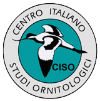
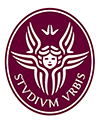









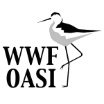
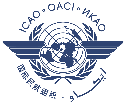


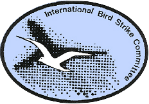
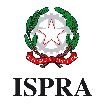

I have good organization skill, dynamic and perfectly able to work alone or as part of a team, I have not problems to adapt myself into different working situations, from field-work to office analyses.
I have good experience in the field of coordination and management of complex projects and researches that involve numerous groups of persons and great amounts of information. English literate with good computer skill, I feel particularly comfortable within international contests where I demonstrate a diplomatic and rigorous attitude. I am moreover able to carefully follow each step of a project's process, from ideation to final outputs.
Professional nature photographer, advanced scuba diver and good walker, I love particularly the sea and open spaces. I have travelled all the continents apart from Asia.
I worked for several national and international organizations and institutions including WWF, IUCN, CITES, International Civil Aviation Organization (ICAO), European Commission, Italian Ministry of Environment, Italian Institute for Environmental Protection and Research (ISPRA), Rome University “La Sapienza”, Italian Civil Aviation Authority (ENAC), etc.
I was Director of the National Marine and Terrestrial Protected Area "Isole di Ventotene e S. Stefano", Scientific Director of the Rome Zoo, Scientific Advisor for the Institute of Applied Ecology (IEA), on contract Professor at Dept. of Biology and Biotechnologies of Sapienza University of Rome.
At present I am the Scientific Advisor of the Italian Civil Aviation Authority, Bird Control Advisor for Rome and Cagliari international airports and the Scientific Advisor of the Italian Civil Aviation Authority.
SOGAER, Cagliari Int. Airport
GEDI Gruppo Editoriale S.p.A., National Geographic Magazine Italy
ENAC Bird Strike Committee Italy, Italian Civil Aviation Authority
AdR, Fiumicino & Ciampino Int. Airports
Panda Photo s.r.l. Nature Photographic Agency (Rome).
Agriconsulting S.P.A. (Rome)
WWF Italy (Rome)
Curcio Editore S.p.A. (Rome)
Soprintendenza Archeologica (Rome)
Ministry of Environment & WWF Italy (Rome)
Eclectica Multimedia Publishing (Rome)
WWF International - Mediterranean Programme Office (Rome)
Bioparco S.P.A. - former Rome Zoo (Rome)
Institute of Applied Ecology (Rome)
Mizar s.r.l. Science Communication (Rome)
IUCN - International Union for Nature Conservation (Gland)
Institute of Applied Ecology (Rome)
Dept. Biology and Biotechnologies "C. Darwin" - Sapienza Rome University (Rome)
ICAO - Internationale Civil Aviation Organization (Pristina)
Bioparco S.P.A. - former Rome Zoo (Rome)
Dept. Biology and Biotechnologies "C. Darwin" - Sapienza Rome University (Rome)
Dept. Biology and Biotechnologies "C. Darwin" - Sapienza Rome University (Rome)
ISPRA - Institute for Environmental Protection and Research, Ozzano Emilia (BO)
National Marine & Terrestrial Protected Area “Isole di Ventotene e S. Stefano” (LT)
Dept. Biology and Biotechnologies "C. Darwin" - Sapienza Rome University (Rome)
Aeroporto di Genova SpA, Genoa Int. Airport (GE)
Regione Sardegna & Anthus s.r.l. (Sardinia)
Istituto Zooprofilattico Sperimentale delle Regioni Lazio e Toscana - IZSLT (Rome)
EIIS - European Institute for Innovation and Sustainability (Rome).
I produced more than 100 scientific publications, over 100 technical publications and reports, over 70 educational publications and several lectures and interviews.
A selection of publications and materials in English and Italian can be downloaded below (pdf format).
You can filter them by subject, and order by year (suggested). If present you can find also an external link and an abstract for each item. For a more complete list of publications click here
The active participation of scientific trusts, including CISO (Centro Italiano Studi Ornitologici), in applied conservation actions plays a crucial role in addressing the challenges faced by natural and semi-natural landscapes, which are increasingly impacted by improper land-use and land-cover. This is particularly true for those landscapes where Large Infrastructures and Big Events (LIBEs) are planned. In these circumstances, researchers, professionals, and environmentalists typically express their concerns on the impacts of LIBEs through mediatic campaigns, often highlighting the ecological importance of vulnerable areas. These actions form the first, useful level of engagement in conservation. However, we advocate for a more proactive role of scientific trusts, which should entail forming task forces of conservation experts and providing scientific support in management decisions when LIBEs are being considered. In our opinion, scientists should locally produce original field studies by using effective sampling designs such as Before-After-Control-Impact surveys. We highlight that such a targeted level of action may support the public agencies when authorizing (or not) LIBEs, by providing evidence-based information about the ecological value of the target area and the potential impacts of LIBEs on ecosystem functions and local biodiversity. The aim is to avoid emotion-based social media loops, conflicts, and polarizations in the discussions about the ecological impacts of LIBEs.
Reptiles, including snakes, can be asymptomatically infected with multiple pathogen microorganisms, including Salmonella spp., which is considered an important concern for public and animal health. Small and uninhabited isles are quite ecologically different from mainland and represent interesting fields of study, to discover unexpected biological and microbiological aspects of their wild inhabitants. This work reports the presence of the very rare Salmonella enterica serovar Yopougon, isolated in a carcass of a native wild snake (Hierophis viridiflavus) from an Italian uninhabited island of Mediterranean Sea, Montecristo. To our knowledge, S. enterica serovar Yopougon was previously isolated only once 34 years earlier in Ivory Coast, from a human fecal sample. In the present study, we present the genomic characterization of the new isolate, the phylogenetic comparison with the previously isolated S. enterica serovar Yopougon strain of human origin and with other sequences available in public databases. In addition, an extensive review of available data in the literature and from our case history is provided. Our finding represents an example of the ability of some pathogens to travel for very long distances within their hosts and then to infect others, even from different taxa.
Wildlife strikes, defined as the violent collision between an aircraft and a bird or, less commonly, another wild animal, can have catastrophic consequences due to the kinetic energy involved. To address this significant safety concern, various professionals worldwide have been studying and mitigating the issue for decades, employing regulatory measures and best practices aimed at minimizing a risk that can never be eliminated. Incidents of wildlife strikes have been on the rise year by year, primarily due to increasing air traffic, quieter and twin-engine aircrafts, and the demographic growth of many wildlife species. This paper sheds light on this often-understated conflict between humans and wildlife and provides an up-to-date compilation of global and national information on this relevant and worrying phenomenon, which has come into focus following dramatic events.
Collisions between aircraft and wildlife (i.e., wildlife strikes) pose a serious threat toward the safety of aircraft, its crew, and passengers. The effects of COVID-19 related travel restrictions on wildlife strikes are unknown. With this study, we aim to address this information gap by assessing the changes of wildlife hazard management performance across European airports during the lockdown period (e.g., period of reduced operations and borders closure in spring 2020). We also sought to raise awareness of the importance of wildlife strike prevention in times of reduced operations. The objective of our study was to compare wildlife strike data before and during the lockdown based on the following criteria: (1) the number of wildlife strikes per 10,000 flights, (2) the groups of wildlife species involved, and (3) the lighting conditions. To conduct our research, we analyzed a dataset of 12,528 wildlife strikes, gathered from 157 civil airports across Europe for the period from March 2017 to February 2021. Our analysis revealed a wide variation in the wildlife strike rates during the lockdown (period of time from March 1, 2020 to February 28, 2021). Our study uncovered an increasing trend of the relative strike rates for almost all wildlife species categories and a slight trend toward more strikes occurring during daytime compared to nighttime. Our findings highlighted the need for continuous wildlife hazard management despite fluctuation in flights and provide potential for airports, airline operators, and other aviation stakeholders to reduce wildlife strike risk.
Seventeen predation attempts on four Hoopoe Upupa epops nests in an heterogenous agricultural Mediterranean area of central Italy were recorded during breeding seasons 2020-21. Camera traps identified 7 different predators’ species, mainly Western whip snake Hierophis viridiflavus and Black rat Rattus rattus. Uropygial secretions and hissing calls from chicks and incubating female inside the breeding cavity always saved the clutches, while no active defense was performed by parents if outside the nest.
During the breeding season, the Hoopoe Upupa epops inhabits traditional and diversified rural habi- tats with high availability of bare ground and short grass areas where it forages. Only a few studies addressed the breeding diet of this species. Most of them were conducted in the intensively cultivated plains of southern Switzerland, where Gryllotalpa gryllotalpa represents the most common prey. In contrast, limited information is available for Mediterranean habitats. To fill this knowledge gap, we investigated the foraging behaviour of the species in a Mediterranean heterogeneous agricultural area in Central Italy during the 2020-2021 breeding seasons. 1123 prey items brought to the nest by adults were identified using camera traps positioned near four natural nests. Insect larvae constitute 84% of the diet, of which 61% are represented by Cicada orni nymphs. The importance of cicadas in the Hoopoe diet has been never described in the literature before. C. orni seems to substitute G. gryllotalpa in the more arid and hard soil of Mediterranean areas. The observed provisioning rate to clutches showed a maximum daily mean of over 14 prey per hour. To investigate Hoopoe foraging micro- habitat selection, six different microhabitat variables were measured at 64 1 m2 plots located at an equal num- ber of foraging and random control points, by using a grid of 100 squares (10x10 cm each). Habitat selection analysis indicates that short herbaceous sward and low herbaceous cover are the fundamental factors driving foraging microhabitat selection. Our study contributed to enhancing the limited knowledge of the Hoopoe diet and foraging ecology in Mediterranean habitats and demonstrates, for the first time, the importance of Cicada orni nymphs in the diet of the species in this biogeographical region.
The risk of wildlife strike is a serious problem all over the world. In North America, Italy and most of the other countries this hazard (95-98% involving birds) is dramatically increasing (in USA, during 2019, 17,358 bird strikes occurred, while in Italy they were 2,095), also because the populations of many wildlife species have increased dramatically since the last decades. In Italy the breeding population of Yellow-legged gull (Larus michahellis), one of the most involved species in bird strikes, together with Kestrel (Falco tinnunculus) and Swift and Swallow (Apus apus and Hirundo rustica), doubled from 1984 to 2006. Most bird strikes occurs between May and August and during the morning; 68% of them occurs below 300 ft of altitude and 95% below 3,000 ft. Most bird strikes occurs during landing (63%) while 34% is experimented during take-off. Bird Strike Committee Italy (BSCI) is the task force dealing with this issue since 1987. It is an ENAC (Italian Civil Aviation Authority) operative structure and since then collected many data from more than 46 airports. It achieved many results, especially under the reporting point of view, and for the next future is planning several activities to mitigate and better monitor the bird strike hazard in Italy.
Bird populations’ monitoring in the Presidential Estate of Castelporziano through scientific ringing. Scientific bird ringing at Presidential Estate of Castelporziano was constantly carried out since 1990 as part of a dense network of coordinated projects at national and international level, aimed at study and monitoring of birds. In the last 15 years (2005-2019) 47.889 individuals of wild birds belonging to 142 taxa were captured in 1,461 days, distributed for 64% in spring, 14% in autumn, 13% in winter, and 8% in summer. Most captures were recorded in autumn (34%), with a minimum in summer (19%). After weighting the data for the catch effort, we found a statistically significant decrease in the number of birds captured in spring and summer from 2005 to 2019. Similarly, the number of taxa dropped significantly in spring, summer, and winter during the same period, with trans-Saharan migrants suffering the greatest decline in numbers. The breeding community showed a significant reduction too in the number of captures over the last 15 years. The reduction of biodiversity in terms of individuals and taxa in the study area (Tor Paterno) may be due to global reasons (e.g., climate change and/or general decline of many taxa). However, also local factors such as structural changes of vegetation or in the presences of wild ungulates along the study period, may have played an important role. Further analysis is needed to establish the exact relevance of each of the above-mentioned components influencing the observed results. Once again, the need for constant monitoring is stressed, in order to highlight and possibly counteract the ecological changes of one of the richest faunal components in the area.
Motivation Documenting potential interactions between species represents a major step towards understanding and predicting the spatial and temporal structure of multi‐trophic communities and their functioning. The metaweb concept summarizes the potential trophic (and non‐trophic) interactions in a given species pool. As such, it generalizes the regional species pool of community ecology by incorporating the potential relationships between species from different trophic levels along with their functional characteristics. However, although this concept is very attractive theoretically, it has rarely been used to understand the structure of an ecological network, mostly because of data availability. Here, we provide a continental‐scale, species‐level metaweb for all tetrapods (mammals, breeding birds, reptiles and amphibians) occurring in Europe and in the Northern Mediterranean basin. This metaweb is based on data extracted from the scientific literature, including published papers, books and grey literature. Main type of variable contained For each species considered, we built the network of potential two‐way trophic interactions. Spatial location and grain We considered all species occurring in the entire European subcontinent, from Macaronesia (including only the islands belonging politically to Spain and Portugal) to the Ural Mountains (west to east) and from Fennoscandia and U.K. islands to the Mediterranean (north to south). We included Turkey, geographically part of Asia, to provide a complete picture of the north‐eastern Mediterranean coast. Time period The data represent information published and/or collected during the last 50 years. Major taxa studied and level of measurement We focused our metaweb on terrestrial tetrapods occurring in the study area. Only species introduced in historical times and currently naturalized were considered; new introductions were excluded. In total, we included 288 mammals, 509 regularly breeding birds, 250 reptiles and 104 amphibians. Software format Data are supplied as semicolon‐separated text files.
Aim Despite recent calls for integrating interaction networks into the study of large‐scale biodiversity patterns, we still lack a basic understanding of the functional characteristics of large interaction networks and how they are structured across environments. Here, building on recent advances in network science around the Eltonian niche concept, we aim to characterize the trophic groups in a large food web, and understand how these trophic groups vary across space. Location Europe and Anatolia. Taxon Tetrapods (1,136 species). Methods We combined an expert‐based metaweb of all European tetrapods with their spatial distributions and biological traits. To understand the functional structure of the metaweb, we first used a stochastic block model to group species with similar Eltonian niches, and then analysed these groups with species’ functional traits and network metrics. We then combined these groups with species distributions to understand how trophic diversity varies across space, in function of the environment, and between the European ecoregions. Results We summarized the 1,136 interacting species within the metaweb into 46 meaningful trophic groups of species with a similar role in the metaweb. Specific aspects of the ecology of species, such as their activity time, nesting habitat and diet explained these trophic groups. Across space, trophic diversity was driven by both biotic and abiotic factors (species richness, climate and primary productivity), and the representation of trophic groups differed among European ecoregions. Main conclusions We have characterized the Eltonian niche of species in a large food web, both in terms of species interactions and functional traits, and then used this to understand the spatial variation of food webs at a functional level, thus bringing together network science, functional ecology and biogeography. Our results highlight the need to integrate multiple aspects of species ecology in global change research. Further, our approach is strongly relevant for conservation biology as it could help predict the impact of species translocations on trophic diversity.
Although much has been said on the spatial distribution of taxonomic and phylogenetic diversity of vertebrates, how this diversity interacts in food webs and how these interactions change across space are largely unknown. Here, we analysed the spatial distribution of tetrapod food webs and asked whether the variation in local food web structure is driven by random processes or by natural and anthropogenic factors. Europe. Present. Tetrapods. We combined an expert‐based food web (1,140 species and 70,601 links) of all European tetrapods with their respective spatial distributions. We mapped 17 different food web metrics representing complexity, chain length, vertical diversity and diet strategy across Europe and tested whether their distribution reflects the spatial structure of species richness using a null model of food web structure. To avoid multicollinearity issues, we defined composite descriptors of food web structure that we related to a set of environmental layers summarizing both natural and anthropogenic influences and tested their relative importance in explaining the spatial distribution of European terrestrial vertebrate food webs. Of the 17 metrics, 10 showed a non‐random spatial distribution across Europe and could be summarized along two major axes of variation in food web structure. The first was related to species richness, mean trophic level and the proportion of intermediate species, whereas the second was related to the connectance and proximity of species within the web. Both descriptors varied with latitudinal gradient. The best descriptors of food web structure were mean annual temperature and seasonality (negatively correlated with the first axis), and human footprint (positively correlated with the second axis). We demonstrate the importance of climate and anthropogenic pressure in shaping the spatial structure of European tetrapod food webs.
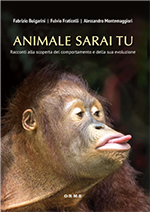
Siamo proprio sicuri che il nostro modo di agire sia davvero unico rispetto a quello delle oltre due milioni di altre specie animali oggi conosciute che vivono sulla Terra? L’infedeltà, l’altruismo, l’amore per i figli, il bullismo: quanto sono diffusi al di fuori della specie Homo sapiens? Gli stessi autori di “Viaggiatori straordinari”, dedicato agli animali migratori e alle loro prodezze, hanno provato questa volta a cimentarsi con il complesso mondo del comportamento animale e umano. Perché i maschi fanno gli spacconi? Perché alcune femmine si accoppiano con molti maschi? È possibile il controllo della mente tra individui di specie diverse? E l’attrazione fatale è un modo di dire o una realtà? A queste e a molte altre domande si cercherà di dare una risposta scientifica attraverso dodici racconti. Sono storie di incontri, di viaggi, di sorprese e di esperienze incredibili, vissute e raccontate con passione, rigore scientifico e una buona dose di ironia da tre appassionati ed esperti naturalisti che hanno passato molto tempo a osservare e studiare gli animali per conoscerli meglio e per poterli proteggere.
Crimean-Congo haemorrhagic fever (CCHF), endemic in Africa, Asia, Eastern Europe and the Middle East, is caused by a tibovirus (CCHFV) transmitted in particular by the Hyalomma genus of the Ixodidae family that can remain attached to the host for up to 26 days, which in case of migratory birds allows long distance carriage. Although CCHF in domestic ruminants is usually subclinical, they may become reservoirs and act as sentinels for the introduction and/or circulation of CCHFV. In this study, possible CCHFV introduction and circulation in Italy were monitored by tick sampling on migratory birds and by a serosurvey conducted on sheep. While bird tick sampling was conducted in thirteen ringing sites of Central and Southern Italy, the serosurvey was performed on flocks grazing in coastal provinces of Central Italy that are stop over areas for birds flying from Africa, where Hyalomma ticks and CCHFV are endemic, to Central and Northern Europe. A total of 282 ticks (80.8% were Hyalomma spp.) were collected from 139 (0.28%) migratory birds of the 50,325 birds checked with 0.22% infested by Hyalomma spp., involving 22 avian species with a mean number of 1.6 Hyalomma spp. per infested bird. For the serosurvey, 540 sheep sera were randomly collected that resulted all negative when examined by an indirect IgG ELISA, employing a recombinant antigen coded by the CCHFV S gene. While the present study confirmed the introduction of CCHFV potential vectors in Central Italy, transported by migratory birds arriving from endemic areas, the serosurvey results did not put in evidence the concomitant arrival of the virus in the study area during the survey period. In general, in areas potentially at risk of CCHFV introduction and circulation, structured serological monitoring of susceptible domestic animals represents a rational system for an early detection of virus circulation.
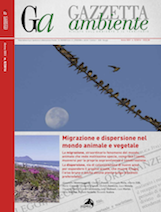
In 2011 ENAC (Italian CAA) released new standards regarding prevenCon of wildlife strike hazard at Italian airports regulaCng tasks, responsibiliCes, reporCng, environmental assessment, monitoring, operaCng procedures, training and risk assessment. At the same Cme a new standard for the wildlife strike risk assessment was introduced. The Birdstrike Risk Index (BRI2) takes into account the ecological characterisCcs of the wildlife communiCes present in each airport area, the local history of wildlife strikes, their effects on flight, the number of aircraQ movements, etc., and enable the comparison of results among different airports. AQer four years, the outcomes of this “new deal” at Italian civil airports will be presented. Pros and cons of the BRI2 will be discussed, and data about yearly risk level, number of wildlife strikes, wildlife presence, etc. will be provided. Two cases of clear evidence of the importance of the environmental management around the airports will be discussed.
Collisions between aircrafts and wildlife, mostly birds, are a serious hazard to aviation and have resulted in the loss of at least 245 aircraft and 276 lives in civil aviation since 1988. Non catastrophic wildlife strikes cause significant operational costs to the aviation industry as a result of repairs to damaged aircraft, delays and cancellations, insurance claims etc. The number of recorded wildlife strikes is increasing all over the world. In USA civil aviation this number has increased 7.4-fold from 1,851 in 1990 to a record 13,668 in 2014; in Italy increased from 348 in 2002 to 1,279 in 2015. The total cost to world commercial aviation has been conservatively estimated at $1.5 billion per year; the USA civil aviation industry, on average, spends $193 million every year, while at least €40 million is the annual cost of wildlife strike in Italy. Many populations of large bird (and mammal) species commonly involved in strikes have increased markedly in the last few decades and adapted to living in urban environments, including airports. The resident Canada goose (Branta canadensis) population in the USA and Canada increased from about 1.0 million to 3.6 million from 1990 to 2014. During the same time period, the North American snow goose (Chen caerulescens) population increased from about 2.6 million to 6.2 million birds. In Italy the breeding population of yellow-legged gull (Larus michahellis), one of the species most involved in wildlife strikes (birdstrikes), together with European kestrel (Falco tinnunculus) and common swift (Apus apus), doubled in the last 20 years. Most wildlife strikes occur in Italy from May to August, and during the morning. 81.8 % of them occur below 300 ft of altitude and 64% during landing of the aircraft. In order to manage the hazard, the International Civil Aviation Organization (ICAO) requires national aviation regulators to ensure the implementation of effective wildlife management policies on the airfields and their surroundings. In Italy ENAC (Italian CAA), through its Bird Strike Committee, provides detailed guidelines and regulations that meet all aspects of the problem such as reporting, environmental assessment, monitoring, operating procedures, training and risk assessment, by clearly identifying roles, tasks and responsibilities. Since 2011 the Italian airport operator has been given the task to monitor and identify potential sources for wildlife attraction also in the vicinity of the airport, and a standard for the wildlife risk assessment was introduced. This takes into account the ecological characteristics of the wildlife communities present in each airport area, the local history of wildlife strikes, their effects on flight, the number of aircraft movements, etc., and enable the comparison of results among different airports. In the presentation wildlife strike relevance, mitigating solutions and their updated results are showed in detail at national level.
È una notizia che circola da giorni: la città di Roma preda di una miriade di storni che mettono in crisi la viabilità cittadina dopo aver reso scivoloso il manto stradale con le loro deiezioni. I numeri degli esemplari presenti a Roma forniti in questi giorni è variabile, così come le misure adottate per contrastare un fenomeno molto comune in tante metropoli del mondo. Quanti sono gli storni che vivono a Roma e perché solo adesso costituiscono un problema? Parliamo di un milione di esemplari. Lo storno è un animale molto adattabile e ha una serie di vantaggi a vivere in folti gruppi. Durante il giorno si reca nella campagne a cercare cibo e la notte torna in città, dove le temperature sono più alte, comportandosi come una sorta di pendolare al contrario. In tutto il mondo è in corso una “guerra allo storno”, portata avanti con i metodi più bizzarri, dall’introduzione di alcuni falchi nell’ecosistema fino, addirittura, alla dinamite, utilizzata in Belgio. Tuttavia è bene considerare soluzioni di altro tipo, inquadrando meglio il fenomeno, come ci ha spiegato Alessandro Montemaggiori, ornitologo dell’Università “La Sapienza” di Roma, in questa intervista. Ma le soluzioni dovrebbero non farci rinunciare a un grande spettacolo. I foltissimi stormi di storni sul cielo di Roma, che compatti disegnano geometrie variabili e affascinanti, rappresentano uno spettacolo straordinario che non è sfuggito a molti documentaristi internazionali.
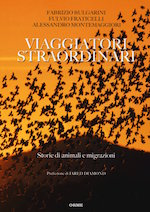
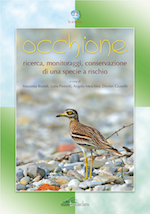
The European Union has made extensive biodiversity conservation efforts with the Habitats and Birds Directives and with the establishment of the Natura 2000 network of protected areas, one of the largest networks of conservation areas worldwide. We performed a gap analysis of the entire Natura 2000 system plus national protected areas and all terrestrial vertebrates (freshwater fish excluded). We also evaluated the level of connectivity of both systems, providing therefore a first estimate of the functionality of the Natura 2000 system as an effective network of protected areas. Together national protected areas and the Natura 2000 network covered more than one-third of the European Union. National protected areas did not offer protection to 13 total gap species (i.e., species not covered by any protected area) or to almost 300 partial gap species (i.e., species whose representation target is not met). Together the Natura 2000 network and national protected areas left 1 total gap species and 121 partial gap species unprotected. The terrestrial vertebrates listed in the Habitats and Birds Directives were relatively well covered (especially birds), and overall connectivity was improved considerably by Natura 2000 sites that act as stepping stones between national protected areas. Overall, we found that the Natura 2000 network represents at continental level an important network of protected areas that acts as a good complement to existing national protected areas. However, a number of problems remain that are mainly linked to the criteria used to list the species in the Habitats and Birds Directives. The European Commission initiated in 2014 a process aimed at assessing the importance of the Birds and Habitats Directives for biodiversity conservation. Our results contribute to this assessment and suggest the system is largely effective for terrestrial vertebrates but would benefit from further updating of the species lists and field management.
Ixodes festai Rondelli, 1926 is a poorly known bird parasite tick, almost unknown in its bionomics, spread, health risk and immature forms. In this short note the finding of four specimens, all females of this species is reported; they were found in Sardinia island, province of Cagliari, Italy, two in 2007 and two in 2014. The collections, occurring in opportunistic manner, were carried out on Turdus merula and on T. philomelos, mean distance migrant birds. Specimens were morphologically identified and represent a contribution to the list of the findings of I. festai, that constitute the only data about its occurrence in Italy. Further investigations on this species and on its possible role as pathogens vectors are required.
Tre miliardi di esemplari in un unico stormo. Una straordinaria peculiarità che faceva della colomba migratrice la specie di uccello più numerosa al mondo. Faceva, perché ora non esiste più. L’ultimo esemplare è morto cento anni fa esatti, nel 1914, in uno zoo americano. Si chiamava Martha ed era l’unica testimonianza vivente di una specie, Ectopistes migratorius, portata all’estinzione dalla follia umana. Così l’ornitologo JJ Audubon descrive la scena terrificante della strage di uno stormo di colombe migratrici a opera dell’uomo:
"Quando si accesero le torce lo spettacolo che si appalesó ai miei occhi era tanto incredibile quanto orrido. Gli uccelli colpiti si ammassavano a terra, intorno ai tronchi, formando grandi mucchi. Qua e là i rami cadevano per il peso degli uccelli posati, trascinandosi dietro alcune vittime. Tutto intorno a me c’era tumulto, furore e pazzia. Non si notava neanche più il rumore dei fucili. Mi rendevo conto che qualcuno aveva sparato solo quando vedevo il cacciatore ricaricare il suo fucile. Nessuno si azzardava a entrare nel bosco: tutti uccidevano dai margini. Anche i maiali erano ancora nei recinti: il loro intervento era previsto solo per l’indomani...
Il silenzio si reimpadroní dei boschi solo verso l’alba. Poco prima che il sole spuntasse, le colombe sopravvissute si levarono in volo, proseguendo la migrazione, mentre l’ululato dei coyote, dei lupi ci ricordava che non eravamo gli unici predatori nel bosco. A quel punto anche gli uomini osarono avventurarsi nel bosco, fra le colombe morte, quelle ferite, quelle moribonde, quelle mutilate. Gli uccelli vennero raccolti, messi in mucchietti ordinati, finché ciascuno si impadroní di tanti quanti ne potesse ragionevolmente accatastare. Poi si lasciarono liberi i maiali, perché si nutrissero di quelle che rimanevano al suolo".
Ermanno Bencivenga, filosofo dell’università di California e autore di numerosi saggi, ha ricordato la scomparsa di Martha in un articolo recentemente apparso sull’inserto della Domenica del Sole 24 ore. Con Bencivenga e con Alessandro Montemaggiori, ornitologo de La sapienza di Roma, raccontiamo la storia di questa specie straordinaria. Tanti americani in quel primo settembre del 1914 piansero davanti alla voliera vuota di Martha, incommensurabili le lacrime versate in seguito per la scomparsa di migliaia di specie, ma la lezione non l’abbiamo ancora imparata.
Climate change is emerging as the greatest threat to natural communities in most of the world’s ecosystems, with mid- and long-range scenarios expected to produce greater extinction rates than habitat loss, currently deemed the top threat to biodiversity. One in eight species of bird is pushed towards extinction by climate change, according to the latest assessment of the IUCN. Time shifting and alteration of phenology, shifting and shrinking of geographical distributions and community disruption are only some of the direct and indirect consequences of climate change on bird populations. This has been clearly demonstrated by many long-time scale field studies and species- and location-specific analyses. Effects of climate change on breeding bird species are often predicted by projecting into future climate scenarios the current species’ climate niche, as estimated with correlative species distribution models. Although widely used and, often, highly successful, these models (and the related projections) are generally calibrated considering only climate variables, without accounting for habitat, biotic interactions and dispersal distances. In order to build more realistic scenarios for changes in the distribution of species breeding in continental Europe, we propose a modeling approach based on the combination of state-of-the-art bioclimatic models, with expert-based habitat suitability and distance to current distribution. Thus, for each species, we developed three layers: a) a bioclimatic model calibrated with an ensemble forecasting approach, considering six climatic variables (annual mean temperature, annual precipitation, mean temperature of the coldest month, growing degree days, summer and winter precipitation) and species’ occurrences according to EBCC Atlas’ 50 x 50 km cells with semi-quantitative data and high coverage completeness; b) an expert-based habitat suitability model which considers land use (Globe Cover), elevation (SRTM) and distance to water (as mapped by CCM21 database) and c) the distance from the present distribution of the species, mapped according to BirdLife. Assuming that the three layers are largely independent, we calculated for each species a final model of the relative probability of presence by multiplying the three maps. We evaluated the reliability of the models using independent points of presence collected mainly in Italy, Spain, UK, Sweden, and Norway. In particular, we calculated the Boyce index (an index of the calibration capacity of the models) for both the classical bioclimatic model and for the final model of relative probability of presence. Our results clearly demonstrate that our approach produces more accurate and better performing models compared to simple bioclimatic ones. Combining our approach with future scenarios for land use and climate, it will be possible to build more robust models showing potential changes in species distribution. Furthermore, it will be possible to incorporate also models of species’ biotic interactions and dispersal distances, providing a biologically richer outcome.
We identified hotspots of terrestrial vertebrate species diversity in Europe and adjacent islands. Moreover, we assessed the extent to which by the end of the 21st century such hotspots will be exposed to average monthly temperature and precipitation patterns which can be regarded as extreme if compared to the climate experienced during 1950-2000. In particular, we considered the entire European sub-continent plus Turkey and a total of 1149 species of terrestrial vertebrates. For each species, we developed species-specific expert-based distribution models (validated against field data) which we used to calculate species richness maps for mammals, breeding birds, amphibians, and reptiles. Considering four global circulation model outputs and three emission scenarios, we generated an index of risk of exposure to extreme climates, and we used a bivariate local Moran’s I to identify the areas with a significant association between hotspots of diversity and high risk of exposure to extreme climates. Our results outline that the Mediterranean basin represents both an important hotspot for biodiversity and especially for threatened species for all taxa. In particular, the Iberian and Italian peninsulas host particularly high species richness as measured over all groups, while the eastern Mediterranean basin is particularly rich in amphibians and reptiles; the islands (both Macaronesian and Mediterranean) host the highest richness of threatened species for all taxa occurs. Our results suggest that the main hotspots of biodiversity for terrestrial vertebrates may be extensively influenced by the climate change projected to occur over the coming decades, especially in the Mediterranean bioregion, posing serious concerns for biodiversity conservation.
In December 2011 ENAC (Italian CAA) released new standards regarding prevention of wildlife strike hazard at Italian airports (Regolamento per la Costruzione e l’Esercizio degli Aeroporti and Circolare ENAC APT-01B). Providing detailed guidelines, the new rules regulate all aspects of the problem such as reporting, environmental assessment, monitoring, operating procedures, training and risk assessment,. Moreover roles, tasks and responsibilities are clearly identified. For the first time the airport operator has been given the task to monitor and identify potential sources for wildlife attraction in the vicinity of the airport. At the same time a new standard for the wildlife risk assessment was introduced (BRI2) to replace the out of date previous one (number of yearly strikes out of 10.000 aircraft movements). BRI2 takes into account the ecological characteristics of the wildlife communities present in each airport area, the local history of wildlife strikes, their effects on flight, the number of aircraft movements, etc., and enable the comparison of results among different airports. How this new standard changes the overall picture of Italian airports in terms of wildlife risk assessment is showed in the present contribution.
An ecological approach to wildlife strike risk assessment was implemented and the resulting algorithm (BRI2) was used to assess the wildlife risk at Italian airports (http://bit.ly/HbiNNK). The BRI2 takes into account the ecological characteristics of the wildlife communities present in each airport area, the local history of wildlife strikes, their effects on flight, the number of aircraft movements, etc. The main achievement is a site-specific analysis that avoids flattening wildlife strike events on a large scale while maintaining comparable airport risk assessments. The Birdstrike Risk Index (BRI2) is a sensitive tool that provides different time scale results allowing appropriate management planning. The methodology applied has been developed together with the Italian Civil Aviation Authority (ENAC), which decided to introduce it as the new standard regarding wildlife strike risk assessment at Italian airports (Regolamento per la Costruzione e l’Esercizio degli Aeroporti and Circolare ENAC APT-01B).
Non ha dubbi il piccolo beccamoschino africano, chiamato anche prinia: quell'uovo non è suo. E quindi passa decisamente all'azione. La posta in gioco è troppo alta: se quell'uovo si schiudesse, il nido avrebbe un piccolo abitante abusivo, che quasi certamente determinerebbe la morte di tutti i pulcini nati dalle uova del legittimo proprietario del nido. Un nuovo studio dell'università di Cambridge svela sorprendenti segreti della lunghissima lotta fra i beccamoschini africani e i tessitori parassiti che da tempo immemorabile ne insidiano le covate, ed è anche l'occasione per ricordare l'analogo duello che nelle nostre foreste vede protagonisti, nel ruolo dei cattivi, i cuculi.
Ne parliamo con Alessandro Montemaggiori, esperto di ornitologia.
The presence of wildlife in airport areas poses substantial hazards to aviation. Wildlife aircraft collisions (hereafter wildlife strikes) cause losses in terms of human lives and direct monetary losses for the aviation industry. In recent years, wildlife strikes have increased in parallel with air traffic increase and species habituation to anthropic areas. In this paper, we used an ecological approach to wildlife strike risk assessment to eight Italian international airports. The main achievement is a site-specific analysis that avoids flattening wildlife strike events on a large scale while maintaining comparable airport risk assessments. This second version of the Birdstrike Risk Index (BRI2) is a sensitive tool that provides different time scale results allowing appropriate management planning. The methodology applied has been developed in accordance with the Italian Civil Aviation Authority, which recognizes it as a national standard implemented in the advisory circular ENAC APT-01B.

Sulle tracce delle sterne codalunga (Sterna paradisaea, Sterna Artica), gli scienziati hanno scoperto che questi uccelli coprono 35.000 chilometri in 2-3 mesi per spostarsi da un Polo all'altro del pianeta, per poi tornare indietro alcuni mesi dopo. Ciascuna tappa di queste migrazioni poi può durare fino a 500 chilometri e alla fine della sua esistenza una sterna può aver coperto tre volte la distanza di un viaggio di andata e ritorno per la Luna: non male per un passeriforme del peso di poche decine di grammi! Ci siamo fatti raccontare questa epica migrazione, e il modo in cui noi umani riusciamo a seguirla, da una protagonista: una sterna codalunga in procinto di iniziare la travesata, affiancata dall'esperto ornitologo Alessandro Montemaggiori.
More than 50.000 birds belonging to 136 species were captured during twenty years of ringing activity in Castelporziano Forest, near Rome. Community indexes were used to explain variations of the avian community related to the complexity and stability of the habitat into the study area. Many recaptures permitted to obtain informa- tion about migration routes, homing and biology.
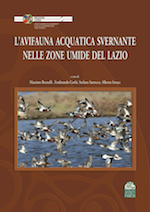
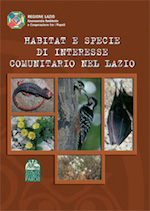
Most accredited studies in Italy and all over the world emphasize the problems related to traditional falconry used as a means against bird hazard at airports. Some negative features of using falcons are the impossibility to be employed during some periods of the year and adverse weather conditions, unforeseen animal behaviour, their biological needs, the tight dependency on the falconer and the limited employment over the day. Above all, high costs play a key role due to the value of the animals, to their training, to the number of birds necessary to be effectively operated on a medium/large size airport and finally to the employment features. The attempts to use remote-controlled model aircrafts instead of real falcons proved to be unsuccessful because of the habituation effect it produced on other birds, that are certainly harassed by the device, but do not recognize it as a natural bird of prey, whose hunting area must be avoided. So it is the frightening effect that is missing, upon which also other dispersal methods are based, such as distress calls or predator effigies. The use of full scale bird of prey accurate reproductions, engine powered and fully remote-controlled, seems to have reached the goal to match the natural predator effectiveness with employment flexibility, cost reduction and mass production.
The long-term advance in the timing of bird spring migration in the Northern Hemisphere is associated with global climate change. The extent to which changes in bird phenology reflect responses to weather conditions in the wintering or breeding areas, or during migration, however, remains to be elucidated. We analyse the relationships between the timing of spring migration of 9 species of trans-Saharan migratory birds across the Mediterranean, and thermal and precipitation anomalies in the main wintering areas south of the Sahara Desert and in North African stopover areas. Median migration dates were collected on the island of Capri (southern Italy) by standardized mist-netting during 1981 to 2004. High temperatures in sub-Saharan Africa (Sahel and Gulf of Guinea) prior to northward migration (February and March) were associated with advanced migration. Moreover, birds migrated earlier when winter rainfall in North Africa was more abundant. The relationships between relevant meteorological variables and timing of migration were remarkably consistent among species, suggesting a coherent response to the same extrinsic stimuli. All these results were obtained while statistically controlling for the long-term trend towards the earlier timing of spring migration across the Mediterranean that has been documented in previous analyses of the same dataset, a trend that was confirmed by the present analyses. In conclusion, our results suggest that thermal conditions in the wintering quarters, as well as rainfall in North African stopover areas, can influence interannual variation in migration phenology of trans-Saharan migratory birds, although the ecological mechanisms that causally link meteorological conditions to the timing of migration remain a matter of speculation.
Some migratory birds have advanced their spring arrival to Northern Europe, possibly by increasing the speed of migration through Europe in response to increased temperature en route. In this paper we compare the phenology of spring arrival of seven trans-Saharan migrants along their migration route and test for patterns indicating that migration speed varied over the season using long-term data collected on the Italian island of Capri and at Ottenby Bird Observatory, Sweden. There was a linear relationship between median arrival dates on Capri and at Ottenby. The slope was not significantly different from one. On average, the seven species arrived 15 days later at Ottenby compared to Capri. There was a (non-significant) negative relationship between the species-specific arrival dates at Capri and the differences in median arrival dates between Capri and Ottenby, possibly indicating a tendency towards faster migration through Europe later in the season. To what extent different species are able to speed up their migration to benefit from the advancement of spring events is unknown.
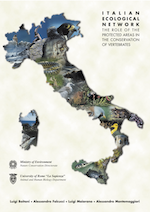
According to a simple - but effective - methodology to monitor bird community and scaring devices adopted and tested at Fiumicino Airport (Rome) since 1989, the information gathered during the period 1989-90 and the period 1995-96 were compared. The obtained results show a decrease in the presence of Gulls (Larus cachinnans and Larus ridibundus) of more than 80%; Starlings (Sturnus vulgaris) decreased of 74,7% and Lapwings (Vanellus vanellus) of 24,2%. These results strongly highlight the importance of a continuous monitoring effort of the avian community at airports, in order to better calibrate and implement the bird-avoidance strategy, and to check the obtained results. Paper presented at the 24 International Bird Strike Committee - Stara Lesna, September 1998.

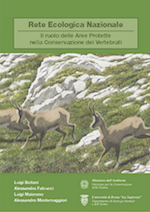
Detailed information on spring migration routes of songbirds across the Mediterranean is still scanty. Results are presented here from a study on the occurrence of eight Palaearctic-African migrants across the western and central Mediterranean based on ringing data collected during the Progetto Piccole Isole, a co-ordinated project based on standardized mist netting at 21 islands and coastal stations. The species were Melodious Warbler Hippolais polyglotta, Icterine Warbler Hippolais icterina, Bonelli's Warbler Phylloscopus bonelli, Wood Warbler Phylloscopus sibilatrix, Pied Flycatcher Ficedula hypoleuca, Collared Flycatcher Ficedula albicollis, Red-backed Shrike Lanius collurio and Woodchat Shrike Lanius senator. Their capture frequencies were expressed as the frequency of each species relative to the total number of migrants ringed at each station in order to correct for differences in capture effort between stations. For most species, the detailed, quantitative results confirmed the scanty information available so far, whereas in the case of Melodious Warbler and Bonelli's Warbler, evidence of undescribed and unexpected migration routes was found. These results suggest that standardized mist netting provides an important method for studying the migratory routes of small birds, in particular for those species which are not frequently ringed in their breeding and wintering grounds.
According to a simple but effective methodology adopted and tested at Fiumicino Airport (Rome) since 1989, to monitor bird community and scaring devices, the information gathered during the period 1989-90 and the period 1995-96 were compared. The obtained results show a decrease in the presence of Gulls (Larus cachinnans and Larus ridibundus) of more than 80%; Starlings (Sturnus vulgaris) decreased of 74,7% and Lapwings (Vanellus vanellus) of 24,2%. These results strongly highlight the importance of a continuous monitoring effort of the avian community at airports, in order to better calibrate and implement the bird- avoidance strategy, and to check the obtained results.
The differential migration of sex and age classes in 16 species of Palearctic-African migrants during their northward spring journey through the Central Mediterranean has been investigated from a large data set collected on 4 Italian islands during the “Progetto Piccole Isole”. Species investigated were: Euro Nightjar Caprimulgus europaeus, Barn Swallow Hirundo rustica, Yellow Wagtail Motacill flava. Common Redstart Phoenicurus phoenicurus, Whinchat Saxicola rubetra, Northern Wheatear Oenanthe oenanthe, Black-eared Wheatear O. hispanica, Subalpine Warbler Sylvia cantillans, Whitethroat S. communis, Blackcap S. atricapilla, Collared Flycatcher Ficedula albicollis, Pied Flycatcher F. hypoleuca. Golden Oriole Oriolus oriolus, Red-backed Shrike Lanius collurio, Woodchat Shrike L. senator, Ortolan Bunting Emberiza hortulana. The seasonal trapping patterns of males and females have been analysed both from the total samples and on a yearly basis. Males have been found passing earlier than females in 14 out of 16 cases, with differences reaching the level of significance in 13 out of 16 species. In the selected species, although the general trapping patterns may vary significantly among years, a temporal gap between males and females remains a fairly constant feature. In a subsample of 13 1 adults are found to migrate earlier than yearlings in 18 or 26 cases (significant differences found in 12 cases), with a slightly higher incidence of earlier movements of adult birds in females than males. This strategy seems to be another feature of spring migration, as confirmed by more detailed analyses referred to samples collected on single years and/or sites.
In order to give to each aerodrome a rough risk value regarding the potential bird hazard, recoveries of ringed birds (data from Italian Ringing Scheme) have been used. Six Italian International airports were selected as example sites (Milan, Venice, Genoa, Rome, Cagliari and Palermo) and recoveries around each site were analyzed. For each bird species a risk value was calculated considering weight, strike statistics, habitat and behaviour. Examples of montly and seasonal risk scales are shown for selected sites. This kind of analysis can be a usefull tool in order to give important information for bird strike hazard prevention.
In 1988, the Istituto Nazionale per la Fauna Selvatica (formerly Istituto Nazionale di Biologia della Selvaggina) - Italian Ringing Scheme within EURING, Started a project to investigate the patterns of sea crossing by passerine migrants coming from their winter quarters in spring, lite main aims of this project, called Progetto Piccole Isole (Small Islands Project, PPl) are: a) to define the seasonal migratory patterns of different species and categories of migrants; b) to study the daily migratory patterns, in order to clarify if a non stop or intermittent flight strategy is used, with special reference to long-distance migrants; c) to investigate the geographical origin of the bird's which migrate through the Mediterranean in spring, and identify the different populations involved; d) to analyze the physical conditions of birds at different stages of sea crossing, and define the role played by the small islands as resting areas; e) to identify the main problems the migrants face while crossing the Mediterranean in spring, in terms of habitat and food availability, with special attention to conservation aspects. The project has been regularly running since 1988 on a constantly increasing number of sites within the Mediterranean. In this paper we will present some general results which originated from the first two years of the project, and referred to the 4 islands which could fully cover both ringing periods.
During December and January 1987-88 fully singing birds have been recorded in a Lathyro-Quercetum cerris wood, and in a meadow, in a Mediterranean woodland near Rome. Only the breeding species showed a full song activity, with a significant correlation between singing activity and density of birds (n° breeding pairs/10 ha) in the wood, and between n° of records (songs) and ten-day periods in Great Tit, Wren and Serin. The last two species, recorded in both area, singing only in wood (the breeding habitat). A progress in sing activity seems to happen in Short-toed Treecreeper and Blackcap too, according to the seasonal progress. Therefore we suggest that the winter singing activity, has a precocious breeding territory’s defense significance, instead of winter feeding territory’s defense.
The avian community of Rome International Airport of Fiumicino has been investigated from 1989 to 1991 with a project commissioned by the Operative Safety Division of Aeroporti di Roma Society. Linear Transect Method as been used and more than 1700 daily recording forms were filled. 88 species of birds were observed: 37 non Passerines and 51 Passerines. Yellow legged gull (Larus cachinnans), Black-headed gull (Larus ridibundus), Lapwing (Vanellus vanellus), Starling (Sturnus vulgaris) and Hooded Crow (Corvus cornix) resulted to be the most important species for risk of collision with landing and taking off aircrafts. Circannual data about their localization, number, periods of presence, flocking, habitat and time preferences, responses to scaring devices, etc. have been collected. The complete results of the research are at present used for planning a complete renewal programme of all scaring devices system.
Der Vogelbestand am Internationalen Flughafen Fiumicino in Rom ist von 1989 bis 1991 in einem Projekt untersucht worden, das von der Abteilung Operative Sicherheit der römischen Flughafengesellschaft vergeben wurde. Es wurden Linientaxierungen durchgeführt, und mehr als 1.700 tägliche Erfassungsbögen wurden ausgefüllt. 88 Vogelarten wurden beobachtet, davon 37 Nichtsingvogel- und 51 Singvogelarten. Weißkopfmöwe (Larus cachinnans), Lachmöwe (Larus ridibundus), Kiebitz (Vanellus vanellus), Star (Sturnus vulgaris) und Nebelkrähe (Corvus corone cornix) waren die für das Vogelschlagrisiko bei Start und Landung wichtigsten Arten. Daten über deren Aufenthaltsort, Anzahl, Anwesenheitsperioden, Schwarmbildung, Standortansprüche, tageszeitliches Auftreten, Ansprechen auf Vergrämungsgeräte usw. sind über zwei Jahre gesammelt worden. die gesamten Ergebnisse der Untersuchungen werden gegenwärtig verwendet,, um ein völlig neues Vergrämungsprogramm zu entwickeln.
I started in 1981 to photograph wildlife professionally and I worked from 1985 to 1988 at Panda Photo S.r.l., a nature photographic agency. I am not a professional photographer anymore, but I still like to document and observe the multiple aspects of nature and wildlife. Here are some recent pictures just to give an idea of what I like. Please ask if you want to use them. If you need I have a huge archive concerning mainly Mediterranean and European nature.
I would be happy to talk to you if you need my assistance in your research or whether you need advisory support for your organization.